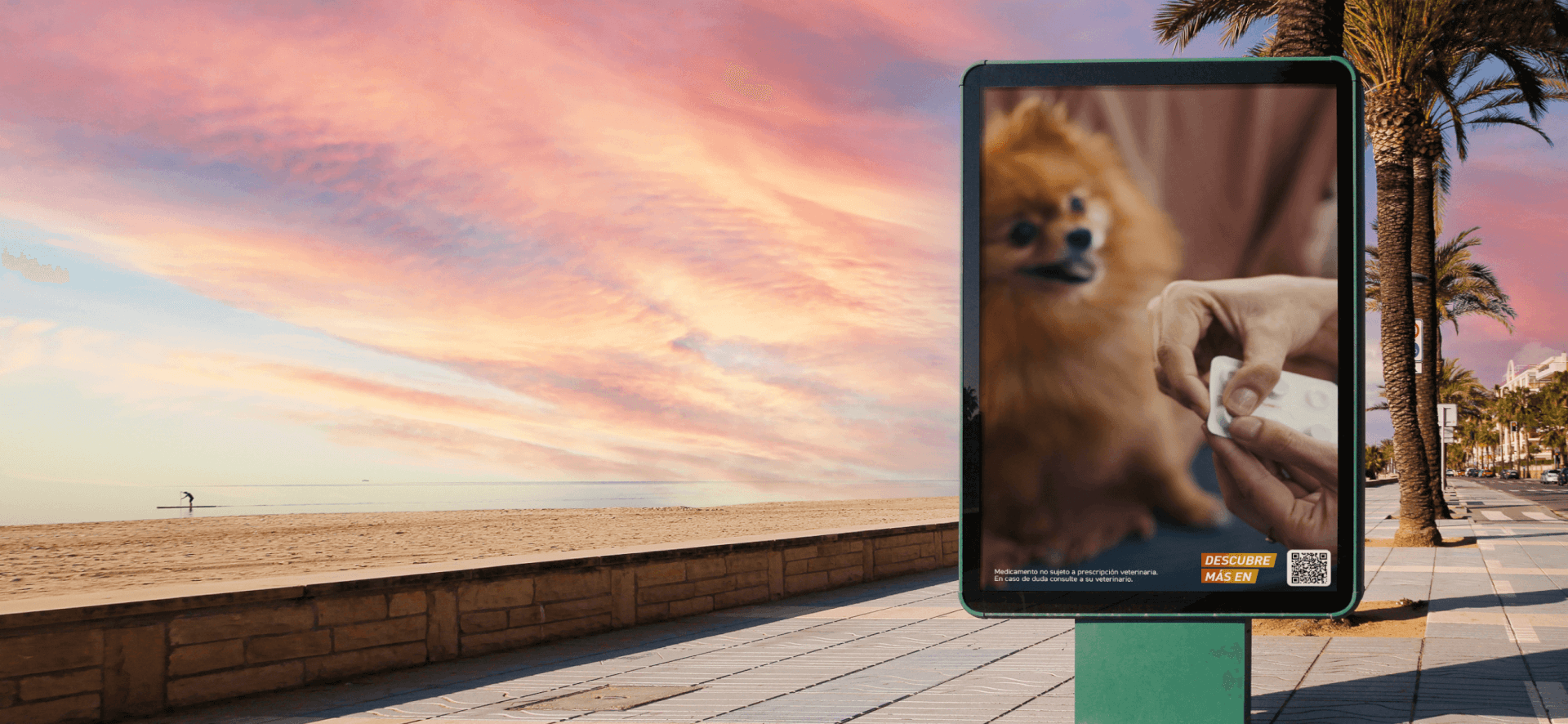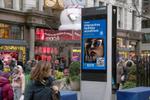As brands dive into cross-channel advertising, the buzz around combining digital out-of-home (DOOH) and mobile advertising continues to grow — and for good reason. While mobile ads can generate clicks, they often struggle to stand out in a crowded digital landscape. DOOH, on the other hand, commands attention with its bold, high-impact presence in public spaces. When paired, these two formats create a powerful synergy that leverages out-of-home data capabilities to refine audience targeting, optimize ad delivery, and seamlessly connect physical and digital consumer behaviours.
In fact, 74% of mobile users take action on their devices after seeing a DOOH ad, according to the Out of Home Advertising Association of America (OAAA). Additionally, combining DOOH with mobile ads can extend campaign reach by up to 303% while increasing engagement by 46%, making this pairing a no-brainer for brands looking to maximize their ROI.
Let’s explore three key reasons why combining these channels is essential for maximizing reach, engagement, and return on investment.
Jump to:
- #1: Extend audience reach and boost brand visibility
- #2: Increase engagement through interactivity
- #3: Gain measurable insights with data-driven campaigns
Extend audience reach and boost brand visibility
DOOH shines in high-traffic locations like shopping malls, transit hubs, and urban centers — public places where brands can engage with large, diverse audiences. By adding mobile advertising, brands can follow these consumers throughout their day, providing a consistent presence across physical and digital environments.
For instance, a dynamic DOOH campaign in a city center might grab the attention of office workers during their morning commute. Later, a retargeted mobile ad can nudge them with more information or a personalized promotion. This multi-channel approach not only increases brand recall but also drives meaningful engagement, with research from the OAAA finding that campaigns combining DOOH and mobile see engagement rates rise by up to 30%. Similarly, a study by Ocean Neuroscience found that consumers are 48% more likely to engage with a mobile ad after seeing the same campaign on a DOOH screen.
Case study: How foodora got creative with pDOOH + mobile
Back in 2018 (before contactless shopping solutions became the norm), foodora was popular for its food delivery service, but the brand’s pick-up option wasn’t as well-known. Determined to change this, foodora’s in-house programmatic marketing team decided to include digital OOH screens in their media campaign to build awareness of this feature amongst German consumers in a targeted way.
While screens helped the brand reach consumers within the heart of their busy business day, screen location was also used to trigger online and mobile campaigns. Using longitude and latitude data, those near a campaign screen were served an ad on their mobile phone to increase campaign reach and frequency. Serving 107,000 ads and reaching a million impressions, foodora’s multi-channel programmatic campaign was a success.
Tip: Geo-targeting is a proven way to connect DOOH and mobile ads. For example, a digital billboard promoting a store sale can trigger mobile ads with discount codes when users are nearby. This strategy aligns with research showing that 76% of consumers take action on their mobile devices after seeing a DOOH ad.
Increase engagement through interactivity
While DOOH grabs attention, mobile advertising turns that attention into action. By incorporating interactive elements like QR codes, NFC technology, or short links into your DOOH campaigns, you can invite audiences to engage directly with your brand.
Case study: Boehringer Ingelheim saw a +105% lift in purchase consideration with DOOH
Boehringer Ingelheim, a leading global pharmaceutical company, wanted to boost awareness and sales for its new pet antiparasitic product under the Frontpro brand, Frontpro Antiparasitic. Leveraging a mix of static and digital creatives, the OOH ads featured QR codes that encouraged audiences to interact with the content. Strategically placed in shopping malls and on outdoor screens near pet stores carrying the product, the ads maximized visibility and accessibility for pet owners. Read the full case study to see the results.

Interactive campaigns aren’t just engaging—they’re effective. Research from Nielsen and the Out of Home Advertising Association of America (OAAA) shows that 52% of viewers take action on their mobile devices after interacting with a DOOH ad, whether visiting a website, redeeming an offer, or making a purchase.
Tip: Incorporate scannable QR codes on DOOH ads to provide instant access to deals or product details. For example, a clothing retailer might use a DOOH ad with a QR code to direct shoppers to an exclusive online sale, boosting both engagement and conversions.
Gain measurable insights with data-driven campaigns
Traditional OOH advertising has long struggled with measurability, but DOOH changes the game by providing real-time analytics on impressions, engagement, and audience reach. Pairing this data with mobile insights allows brands to track the full customer journey, from initial exposure to final action.
For instance, an OAAA and Nielsen study on digital out-of-home found that DOOH ads prompt over half of consumers to take actions on their mobile devices, including visiting websites, redeeming offers, or making purchases. This kind of cross-channel campaign integration unlocks campaign measurement, and improves metrics as diverse as brand awareness, ad recall, engagement, and even store visitation. In fact, the combination of OOH and mobile can drive store traffic 2.5x more effectively than either alone.
READ ALSO: Solidify your understanding of important DOOH metrics and learn how they can be used to measure different aspects of your DOOH campaign’s success
Case study: Samsung’s pDOOH + mobile retargeting campaign in Texas
Samsung was looking to increase brand awareness, consideration, and purchase intention for its Galaxy S21 smartphone in this booming region of the U.S. Partnering with Broadsign and the agency Cheil, they developed a programmatic DOOH strategy targeting specific audience segments. The campaign delivered highly-targeted impressions and included mobile retargeting, creating a seamless omnichannel experience. This strategy resulted in significant improvements in brand metrics and consumer engagement — plus, a 1.75x lift in in-store visitation.
Read the full case study to learn how Samsung’s pDOOH campaign used mobile retargeting to go big in Texas
Tip: Use mobile analytics to retarget users who engaged with your DOOH campaign. For instance, if someone scanned a QR code on a billboard but didn’t convert, follow up with a personalized mobile ad offering an additional incentive.
Why DOOH + mobile advertising is the future of cross-channel marketing
As consumers move seamlessly between physical and digital spaces, combining DOOH and mobile advertising provides the perfect opportunity to engage them at every touchpoint. With extended reach, interactive experiences, and measurable results, this pairing delivers a powerful way to boost engagement and achieve marketing goals.
Want to learn more about measuring and extending DOOH campaign performance?
Check out our measurement and attribution solutions tailored to your campaign goals.








